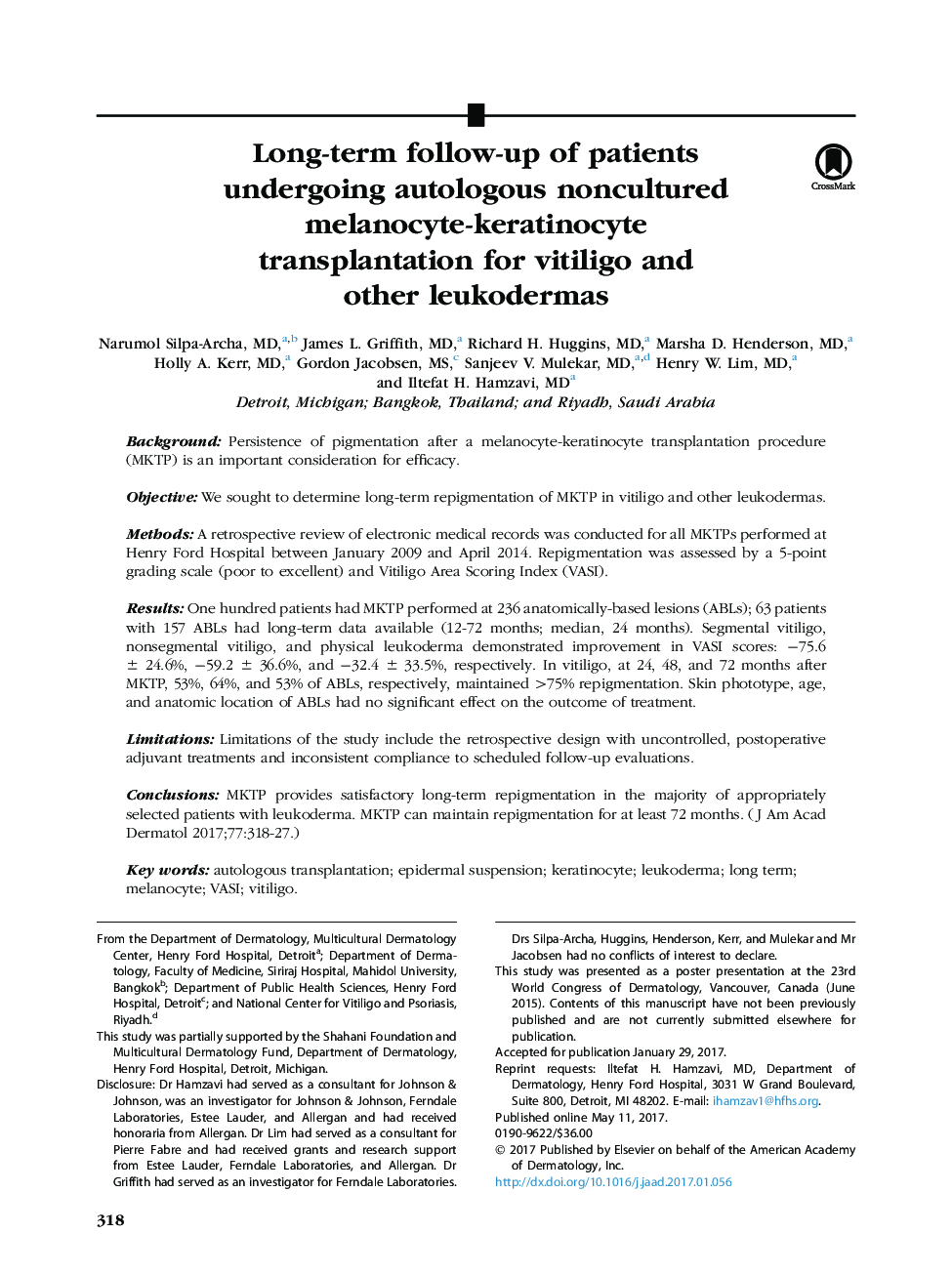| Article ID | Journal | Published Year | Pages | File Type |
|---|---|---|---|---|
| 5648665 | Journal of the American Academy of Dermatology | 2017 | 10 Pages |
BackgroundPersistence of pigmentation after a melanocyte-keratinocyte transplantation procedure (MKTP) is an important consideration for efficacy.ObjectiveWe sought to determine long-term repigmentation of MKTP in vitiligo and other leukodermas.MethodsA retrospective review of electronic medical records was conducted for all MKTPs performed at Henry Ford Hospital between January 2009 and April 2014. Repigmentation was assessed by a 5-point grading scale (poor to excellent) and Vitiligo Area Scoring Index (VASI).ResultsOne hundred patients had MKTP performed at 236 anatomically-based lesions (ABLs); 63 patients with 157 ABLs had long-term data available (12-72 months; median, 24 months). Segmental vitiligo, nonsegmental vitiligo, and physical leukoderma demonstrated improvement in VASI scores: â75.6 ± 24.6%, â59.2 ± 36.6%, and â32.4 ± 33.5%, respectively. In vitiligo, at 24, 48, and 72 months after MKTP, 53%, 64%, and 53% of ABLs, respectively, maintained >75% repigmentation. Skin phototype, age, and anatomic location of ABLs had no significant effect on the outcome of treatment.LimitationsLimitations of the study include the retrospective design with uncontrolled, postoperative adjuvant treatments and inconsistent compliance to scheduled follow-up evaluations.ConclusionsMKTP provides satisfactory long-term repigmentation in the majority of appropriately selected patients with leukoderma. MKTP can maintain repigmentation for at least 72 months.
